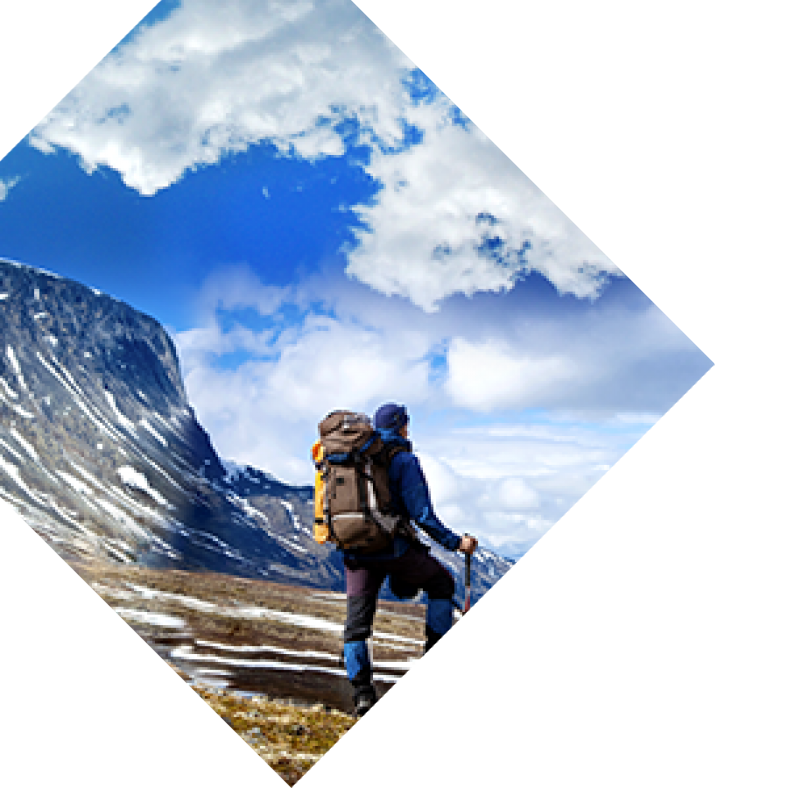You can’t beat that feeling of being inspired and discovering new things. Any adventure − whether big or small − always excites us, but there is something extra intriguing about finding beauty and creativity in even the darkest of corners. And out of the darkness comes the awe-inspiring photographic technique, light painting. Read our guide to perfecting the skill, which we are sharing with you as part of our #ThinkProject campaign. We want to inspire you to think about something you’ve never done before. Ever thought about trying something new and challenging yourself? After all, you may discover something you love and a talent you never knew you had…  Firstly, what is light painting? It’s a distinctive photography technique which relies on the movement of light while the camera shutter is left open. By shooting in a dark location and using long exposure photography, you can ‘paint’ incredible trails of light across the scene without the need for post-production. https://www.youtube-nocookie.com/embed/Xj40DMF2ou4 What you need to get started:
Firstly, what is light painting? It’s a distinctive photography technique which relies on the movement of light while the camera shutter is left open. By shooting in a dark location and using long exposure photography, you can ‘paint’ incredible trails of light across the scene without the need for post-production. https://www.youtube-nocookie.com/embed/Xj40DMF2ou4 What you need to get started:
- A camera with manual controls: Just about every DSLR camera has a manual or bulb setting, which is what you will want to shoot in. However, it is key that your camera allows you to open the shutter for an extended period of time – anything from 10-20 seconds will be enough to get you started. Film cameras will also work, but a digital camera tends to be easier as you can make corrections as you go.
- A tripod or solid surface: It’s essential that your camera sits perfectly still as you will be using long exposure. A tripod is a simple option - if you don’t have one you could try making one. (Check out this video for tips about how to make a tripod cheaply using materials including plastic bottles or sand!)
- A light source: This could be anything as long as it emits light - a torch, a match, a glow stick, sparklers, your phone etc will all work. Different light sources will create different colours in your photograph, so don’t be afraid to be creative and experiment!
- Colour gels: These photo filters are thin sheets of coloured materials (usually polycarbonate or polyester). Although not an essential part of your kit, they can be used to wrap over your lights to adapt the tint of your light and add colour.
Now follow our guide to begin your light painting adventure:  STEP ONE: Choose the perfect spot You can create a light painting either inside or outside, but you must avoid any light sources which could interfere with your shots - whether streetlights, car headlights or anything else. If you are inside, make sure you are in a dark room and if you are outside, it’s best to be somewhere fairly secluded so you keep in control of your image. STEP TWO: Get your camera in place Place your camera on the tripod or flat surface and take a sample shot with the flash or lights on. Here you can check you are happy with your composition, or experiment until you are. STEP THREE: Set the exposure Set the exposure to a relatively long value and stop down the aperture enough so your point of interest is in focus and sharp. STEP FOUR: Adjust the shutter speed Ultimately your shutter speed depends on your location, how much light is around you and the effect you would like to gain in your painting. Try with 10-15 seconds to start with, but experiment until you get the look you would like. STEP FIVE: Turn off the lights Remember to avoid any background lights which will interfere with your painting. STEP SIX: Release the shutter You can either use a remote for this, or can manually press the shutter button. STEP SEVEN: Turn on your light source and get painting Once you’ve released the shutter, quickly get into position, turn on your light source and start painting!
STEP ONE: Choose the perfect spot You can create a light painting either inside or outside, but you must avoid any light sources which could interfere with your shots - whether streetlights, car headlights or anything else. If you are inside, make sure you are in a dark room and if you are outside, it’s best to be somewhere fairly secluded so you keep in control of your image. STEP TWO: Get your camera in place Place your camera on the tripod or flat surface and take a sample shot with the flash or lights on. Here you can check you are happy with your composition, or experiment until you are. STEP THREE: Set the exposure Set the exposure to a relatively long value and stop down the aperture enough so your point of interest is in focus and sharp. STEP FOUR: Adjust the shutter speed Ultimately your shutter speed depends on your location, how much light is around you and the effect you would like to gain in your painting. Try with 10-15 seconds to start with, but experiment until you get the look you would like. STEP FIVE: Turn off the lights Remember to avoid any background lights which will interfere with your painting. STEP SIX: Release the shutter You can either use a remote for this, or can manually press the shutter button. STEP SEVEN: Turn on your light source and get painting Once you’ve released the shutter, quickly get into position, turn on your light source and start painting!  Now you know the basics, check out our tips and tricks to perfecting your painting:
Now you know the basics, check out our tips and tricks to perfecting your painting:
- To avoid appearing in your own painting, make sure the light is aimed at the subject you would like to feature - and not yourself! Keep moving during the whole exposure, and never stand in one place for more than a couple of seconds or you’ll appear in your picture. Wearing dark clothing also helps to avoid this.
- Ensure you keep the light moving the whole time to avoid creating any spots or harsh lines.
- If you’re new to light painting, start with basic methods before working up to more challenging techniques. This could simply be drawing abstract mid-air images (just as you would with a sparkler) while you hone your skills.
- If you want to create a more defined and abstract look, come in closer to the subject. If you keep moving and keep your light moving, you’ll avoid showing up in the photo while you do this.
- Try using your smartphone to experiment with different colours in your painting. All you need to do is download a torch app that makes your screen glow any colour you’d like. Turn the light on and off to get the creative effect of discontinuous lines in your painting.
Tempted to give it a go? Enter our competition to win an incredible light painting experience in Iceland. Visit our website to find out more details and to enter. Good luck! Light painting is just one of the skills we’re exploring as part of our #ThinkProject campaign. Over the next few months we want you to think about what you love doing with GORE-TEX products behind you. Think about what you’ve never done before, what you would like to try and what you never dreamed you could. We want to inspire you to get outdoors, help you discover new passions and to experience the unimaginable. All you have to do is THINK. Is there something you’ve always wanted to try, whether it’s to go on a once in a lifetime trip or learn a new skill? Let us know in the comments below.
You may also enjoy
View all articles in this categoryThinkProject
Top Snow Sports to Start off the New Year
Discover a new passion or snow sport this new year. The GORE-TEX brand invites you to rethink what's possible for outdoor fun!
ThinkProject
Our Top Five Hidden Gems Across The Globe
Discover the beauty of nature and awesome outdoor backdrops around the world. Read the blog then get out there and have fun outside!
ThinkProject
Top Five Family Activities this Summer
Get the whole family outside and enjoy the summer. Read our top five family activities and be inspired try something different with your family.


